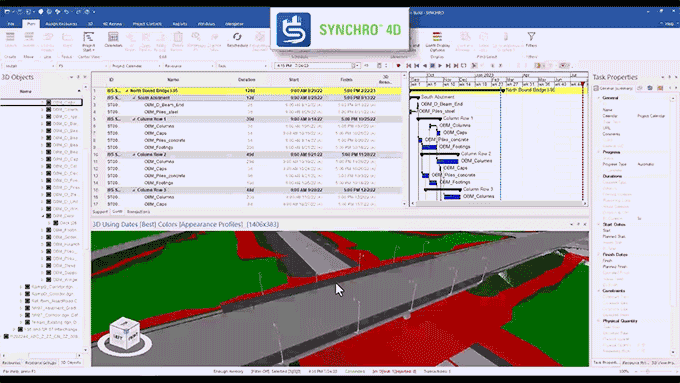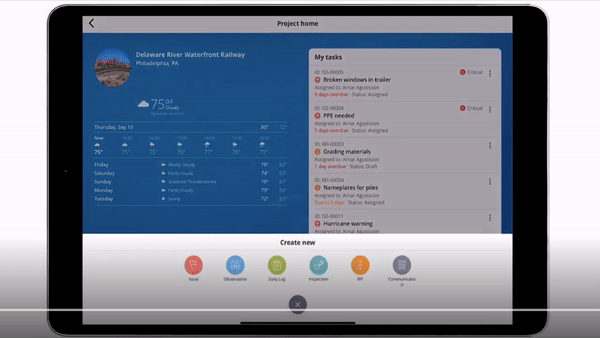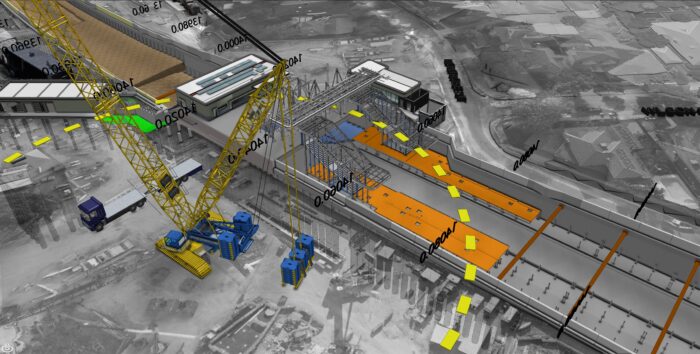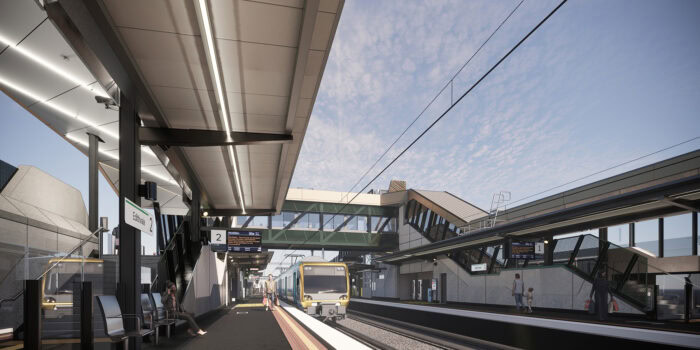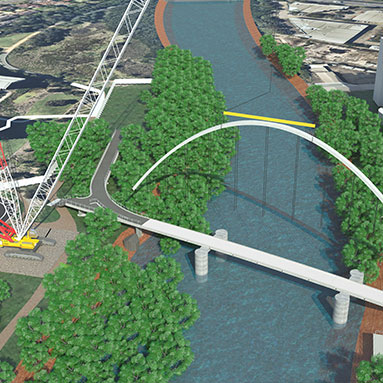SYNCHRO
Digital Construction Delivery Software
Plan, optimize, and track projects for greater certainty and fewer risks in construction.
Contact Us
Capture, Analyze, and Optimize Construction Data in a Full Digital Context
Empower your teams to master construction projects with total visibility and control.
SYNCHRO combines advanced simulations and high-value data, for faster, safer, and more efficient project delivery.
Reduce Costs and Risks
Informed Decision-Making
Digital models and performance tracking empower teams, in the field and office, to make quick, data-driven decisions to keep projects on schedule.
Improved Safety and Quality
Improve constructability with design validation and clash detection, reducing rework and enhancing on-site safety.
Seamless Handover
Accurate as-built models (Construction Digital Twins) facilitate smooth transition to operations.
- SYNCHRO 4D
-
Desktop construction planning software for advanced 4D visual planning, scheduling, and modeling.
- 4D model-based schedules and simulations
- Work area creation
- Break design models into constructable components
- Model-based quantity take off / Cost and Work breakdown structures (QTO/WBS)
- Integrate with construction and site management
- Model aggregation / federated model
- Model cloud/ Connected Data Environment (CDE) collaboration
- SYNCHRO Perform
-
Web and Mobile Solutions for Real-Time Insights Into Project Progress, Productivity, and Performance.
- Track daily productivity and progress at the workfront and generate earned value analysis KPIs and reports
- Capture actual values against schedule tasks
- Understand the impacts of unplanned events on schedule and budget
- Capture site records, such as comments, photos and daily diaries and generate daily and weekly reports
- SYNCHRO Field
-
Mobile Solution Built to Solve Field Execution Challenges.
- Capture and access data through maps, geo-PDFs, 2D CAD, and in 3D/4D models.
- Know where you are on large construction projects (geo-location services)
- Simplify day-to-day tasks including RFIs, inspections, and daily logs
- Track project models in the field, even when offline
- Capture real-time data at any moment
- Access all project documents and media online or offline
Desktop construction planning software for advanced 4D visual planning, scheduling, and modeling.
- 4D model-based schedules and simulations
- Work area creation
- Break design models into constructable components
- Model-based quantity take off / Cost and Work breakdown structures (QTO/WBS)
- Integrate with construction and site management
- Model aggregation / federated model
- Model cloud/ Connected Data Environment (CDE) collaboration
Web and Mobile Solutions for Real-Time Insights Into Project Progress, Productivity, and Performance.
- Track daily productivity and progress at the workfront and generate earned value analysis KPIs and reports
- Capture actual values against schedule tasks
- Understand the impacts of unplanned events on schedule and budget
- Capture site records, such as comments, photos and daily diaries and generate daily and weekly reports
Mobile Solution Built to Solve Field Execution Challenges.
- Capture and access data through maps, geo-PDFs, 2D CAD, and in 3D/4D models.
- Know where you are on large construction projects (geo-location services)
- Simplify day-to-day tasks including RFIs, inspections, and daily logs
- Track project models in the field, even when offline
- Capture real-time data at any moment
- Access all project documents and media online or offline
SYNCHRO Control Capabilities, Now in ProjectWise
We’ve incorporated SYNCHRO Control’s capabilities into ProjectWise to create an enhanced, unified project delivery experience. Your teams now benefit from a single, collaborative environment for all your design and build data and workflows.
Win More Bids With SYNCHRO
Stand out in bids with 4D simulations that bring your execution strategy to life. SYNCHRO 4D gives you a competitive edge by demonstrating exactly how complex projects will be delivered – making proposals more compelling, credible, and superior to static 2D documentation.
- 2x
- 1.75x
- 1.5x
- 1.25x
- 1x, selected
- 0.75x
- 0.5x
- Chapters
- descriptions off, selected
- captions settings, opens captions settings dialog
- captions off, selected
- default, selected
This is a modal window.
Beginning of dialog window. Escape will cancel and close the window.
End of dialog window.
This is a modal window. This modal can be closed by pressing the Escape key or activating the close button.
This is a modal window. This modal can be closed by pressing the Escape key or activating the close button.
Bentley Infrastructure Cloud
Powered by iTwin
Optimize project, construction, and asset management with 2D, 3D, and 4D data analysis using ProjectWise, SYNCHRO, and AssetWise tools. From conception to management, streamline infrastructure development with digital twins for better outcomes.
2023 Constructech Top Products awards
SYNCHRO wins the 2023 Constructech Top Products awards for SYNCHRO 4D, SYNCHRO Perform, and SYNCHRO Field.
Top Construction Technology Firms of 2022
SYNCHRO ranks in top 2022 products in the “Project Management, Collaboration and Scheduling” category for Construction Executive.
User Testimonials
Featured SYNCHRO User Stories
EchoWater Project
Advances Wastewater Treatment to Help Relieve Multiyear Drought in Sacramento
Digital Twin Saves USD 400 Million for Reinvestment into Recycled Water for the California Agriculture Sector, Improving Groundwater Sustainability
Laing O’Rourke and SEPA
Untangling Roads and Rail
The 4D model enabled the team to develop construction staging plans 71.5% faster than with 2D diagrams.
ACCIONA
Modernizing Melbourne’s Rail Infrastructure
SYNCHRO helps drive digital-first approach to reduce construction staging time and ensure a safe work environment.
Solid Support
Australia's First Diagonal Arch Bridge.
Solid Support uses SYNCHRO to deliver standout animation to win tender for Australia’s first diagonal arch bridge.
Bentley Infrastructure Cloud
Powered by iTwin
Reimagine how you design, build, operate, and maintain the world’s infrastructure with Bentley Infrastructure Cloud’s integrated suite of cloud-based products, unlocking more collaborative workflows.
SYNCHRO Videos
0:55
2:29
1:48
SYNCHRO
From Field to Office
- Simplify Digital Project Delivery
- Win more projects
- Make scheduling easy
- Manage tasks and data in real-time
- Expedite operations in the field
- Geolocate everything
Resources
SYNCHRO FAQs
- Create a schedule, or integrate with third-party scheduling software, (such as P6, Asta Powerproject, etc.)
- Perform virtual construction planning with 4D models, interoperable with over 50 CAD applications
- Break down design model for construction
- Interact and augment engineering data needed for construction tasks
- Access models in the field for planning, reviews, or inspections
- Perform digital rehearsals
SYNCHRO 4D, powered by iTwin
The following minimum, recommended, and Enterprise Edition system specifications are outlined below.
The minimum specification accommodates a project with several thousand tasks, and some 3D information (such as the example models provided with SYNCHRO Pro).
- Processor: 2.8 GHz Quad Core
- Memory (RAM): 16 GB
- Graphics Card: 4 GB
- Display: 1280×1024
The recommended specification accommodates a project with tens of thousands of tasks, and detailed 3D information.
- Processor: 4 GHz Octa Core
- Memory (RAM): 32 GB or greater
- Graphics Card: 16 GB
- Display: 2560×1600 and dual monitors
The enterprise edition specification ensures scalability and performance for the largest projects, and highly detailed 3D information (for example structure plus MEP detail).
- Processor: 5 GHz Octa Core
- Memory (RAM): 64 GB or greater
- Graphics Card: 32 GB, 64 GB, or greater
- Display: 2560×1600 and dual monitors
For all systems –
- Hard Disk Space
- 5 GB for installation files
- 1 GB for each project file (typical)
- 100 MB for small office model (optional)
- Operating System
- Microsoft Windows 10, 11
ProjectWise Explorer Client
- 1 GHz x64 processor or better.
- 1 GB of RAM minimum, additional RAM recommended for adequate streaming of point cloud and raster references.
- 1.1 GB of free hard disk space for installation, additional space for the working directory (depending on the number and size of files) if the user’s working directory will be on this computer.
- 64-bit Windows server or client operating system:
- Windows Server 2022, Standard and Datacenter editions
- Windows Server 2019, Standard and Datacenter editions
- Windows 11
- Windows 10
- Windows networking configured for the TCP/IP protocol (IPv4 or IPv6).
- Microsoft .NET Framework 4.6 or later.
- Microsoft .NET Framework 3.5 SP1 for Microsoft Office integration.
- Microsoft Excel for ProjectWise Export/Import feature.
ProjectWise Drive
- Windows operating system
SYNCHRO Field
iOS
- SYNCHRO Field supports iOS/iPad OS 15.0+, but the latest version is strongly recommended.
- For projects that will utilize model workflows, iPad Pro or iPhone Pro on the latest iOS version are strongly recommended. For projects that don’t require model workflows, iPad or iPhone on the latest iOS version are recommended.
Android
- Flagship models on the latest Android version are strongly recommended.
- 64-bit CPUs are required. Please ensure the operating system (OS) runs in 64-bit mode.
- SYNCHRO Field supports Android 9.0, but the latest version is strongly recommended.
